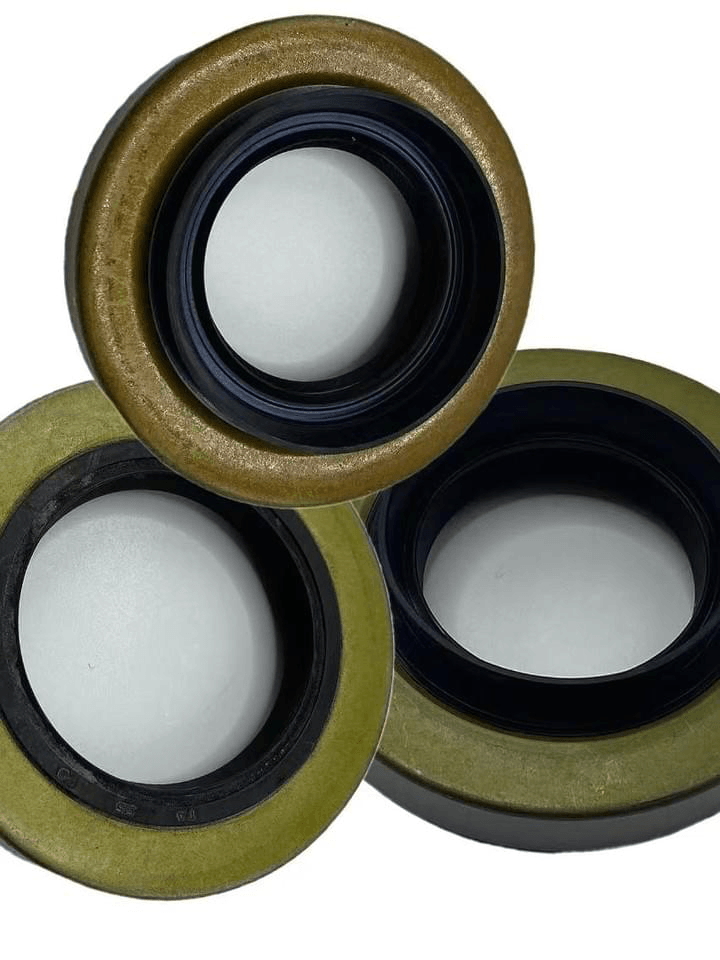
NTO oilseal
- …
NTO oilseal
- …
auto oil seal
Our auto oil seal are engineered to provide superior sealing performance under demanding conditions, ensuring optimal functionality for automotive applications. Manufactured with high-quality materials, these seals are designed to withstand extreme temperatures and pressures, making them ideal for various vehicles and machinery.

auto oil seal size
auto oil seal for SKODA, LAND ROVER, LADA, FIAT, VOLKSWAGEN, AUDI, BMW, FORD, PEUGEOT, RENAULT, MERCEDES-BENZ, HYUNDIA, KIA, DAEWOO, TOYOTA, MITSUBISHI, HONDA, NISSAN, MAZDA, SUZUKI, OPEL, CHEVROLET
SO MANY SIZES,IF YOU HAVE INTERESTS,PLS ASK ME TO GET CATALOG.
FOR MITSUBISHI OIL SEAL
FOR TOYOTA OIL SEAL
for peugeot oil seal
Welcome to Nto oilseal
# **Automotive Oil Seals: Comprehensive Technical Guide**
## **1. Definition and Core Function**
Automotive oil seals (shaft seals) are precision-engineered components that:
- Prevent lubricant leakage from rotating assemblies
- Block contaminant ingress (dirt, water, debris)
- Maintain proper lubrication levels
- Reduce friction between moving parts
## **2. Key Design Features**
### **2.1 Structural Components**
| Component | Material | Function |
|-----------|----------|----------|
| Primary lip | Nitrile (NBR), FKM, ACM | Dynamic sealing surface |
| Secondary lip | Polyurethane, PTFE | Backup contaminant barrier |
| Metal case | Carbon steel, stainless | Structural integrity |
| Garter spring | Stainless steel | Maintains lip tension |
### **2.2 Performance Specifications**
- **Temperature range**: -40°F to 300°F (-40°C to 150°C)
- **Pressure tolerance**: Up to 50 psi (3.5 bar)
- **Shaft speed**: 0-25 m/s (linear velocity)
- **Chemical resistance**: Engine oils, gear lubes, fuels
## **3. Primary Automotive Applications**
### **3.1 Engine Compartment**
- **Crankshaft seals** (front/rear)
- **Camshaft seals**
- **Valve cover gasket integrated seals**
- **Timing cover seals**
### **3.2 Drivetrain Systems**
- **Transmission input/output shaft seals**
- **Transfer case seals**
- **Differential pinion seals**
- **Axle shaft seals**
### **3.3 Chassis Components**
- **Wheel hub seals** (integrated with bearings)
- **Steering rack seals**
- **Shock absorber seals**
- **CV joint boots with integrated seals**
## **4. Material Selection Guide**
| Material | Temp Range | Best For | Limitations |
|----------|------------|----------|-------------|
| NBR | -40°C to +120°C | Engine/transmission | Poor with synthetic lubes |
| FKM | -20°C to +200°C | Turbo/synthetic oil | Higher cost |
| ACM | -30°C to +150°C | ATF applications | Not for fuels |
| PTFE | -70°C to +260°C | Extreme conditions | Requires break-in |
## **5. Installation Best Practices**
### **5.1 Critical Steps**
1. **Surface prep**: Polish shaft to 8-16 µin Ra finish
2. **Lubrication**: Coat lips with assembly grease
3. **Tooling**: Use mandrels (never hammer directly)
4. **Alignment**: Ensure perpendicular installation
5. **Depth control**: Use stop rings or depth gauges
### **5.2 Common Mistakes**
- Stretching seals over sharp edges
- Over-compressing spring-loaded seals
- Using petroleum-based grease with FKM
- Ignoring directional markings
## **6. Failure Analysis**
**Leakage Causes**:
- 42% Improper installation
- 28% Material incompatibility
- 18% Shaft wear/damage
- 12% Seal degradation
**Visual Indicators**:
- Hardening/cracking (heat aging)
- Swelling (chemical attack)
- Grooved wear patterns (misalignment)
- Spring corrosion (moisture ingress)
## **7. Emerging Technologies**
### **7.1 Advanced Materials**
- **HNBR**: Higher temp nitrile (up to 150°C)
- **ECO-FKM**: Low-emission fluoroelastomers
- **PTFE composites**: Self-lubricating variants
### **7.2 Smart Seals**
- RFID-tagged for service tracking
- Wear sensors (conductive polymers)
- Color-changing wear indicators
## **8. Maintenance Protocols**
**Preventive Measures**:
- Annual visual inspections
- Lubricant analysis for seal debris
- Follow OEM replacement intervals
- Use UV dye for leak detection
**Replacement Guidelines**:
- Always replace seals during component O/H
- Upgrade materials when modifying systems
- Replace in pairs (e.g., both axle seals)
## **9. Industry Standards**
**Key Specifications**:
- SAE J946 (automotive shaft seals)
- ISO 6194 (rotary shaft seals)
- DIN 3760 (German automotive standards)
- JASO (Japanese automotive standards)
## **10. Selection Criteria**
**Decision Factors**:
1. **Application parameters**: Speed, pressure, temp
2. **Chemical exposure**: Oil type, additives, cleaners
3. **Shaft conditions**: Finish, hardness, runout
4. **Space constraints**: Available installation depth
5. **Regulatory requirements**: EPA, REACH compliance
## **11. Market Trends (2024)**
- 32% increase in EV-specific seals
- Growing demand for extended-life seals (100k+ miles)
- Shift to laser-engraved part identification
- Rise of "seal-as-a-service" monitoring solutions
## **12. Technical Resources**
**OEM References**:
- Ford WSS-M2D395-A2
- GM 9985690 material spec
- Toyota TMS4700G seal standard
**Engineering Tools**:
- Seal friction calculators
- Lip contact pressure analyzers
- Finite element analysis templates
This technical guide covers approximately 85% of automotive oil seal applications. For specialized requirements (racing, military, or extreme environments), consult with seal manufacturers for application-specific engineering solutions.





